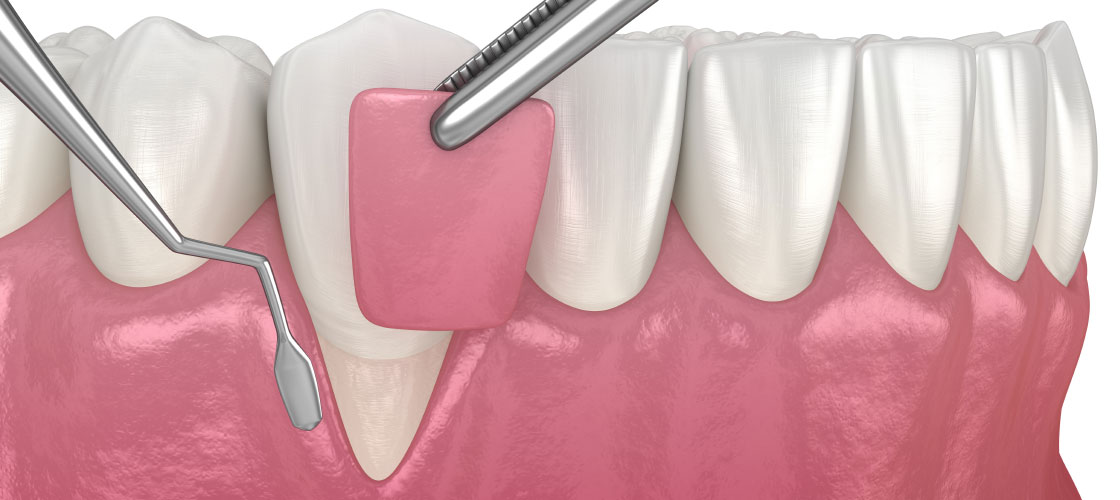When the gums recede, it exposes the root of the tooth which is more susceptible to decay. Luckily in many cases a gum graft can turn back the clock of time and reverse the damage.

What is a gum graft?
A gum graft is a procedure that fixes an area where the gums have receded and the roots are exposed. Donor graft tissue is used, typically taken from the roof of the mouth, and attached to a prepared area along the gum line where the recession exists. Once healed, the area of recession or defect is fixed and the tooth and gums are once again in a healthy state. Some additional benefits of a gingival graft include:
- Decreases sensitivity by covering the exposed root surface with new gum tissue.
- Protects again gum recession, especially teeth with gum defects.
- Strengths and stabilizes the gums covering the tooth.
- Covers the yellow root surface with natural gums, restoring a beautiful smile.
When do I need a gum graft?
Gum grafts are typically necessary under two conditions. First, when there is a significant amount of gum recession, which you can see. Second, when you sensitive teeth, but no other decay. The exposed teeth will often look extra long. A portion of the tooth will also appear darker than the rest of the white tooth. Gum recession can lead to hot and cold sensitivity. It can also make the tooth more vulnerable to decay, and allows for more rapid gum recession. If left untreated, the eventual result will lead to bone and tooth loss. Proper treatment is very important for long term health.
Do gums grafts hurt?
Gum grafts, like all surgeries, are not painful during the surgery, but are uncomfortable during the healing process. It is not debilitating pain and can be likened to eating too many chips and tearing up the roof of your mouth. There are pain management tools available to make the donor and surgical sites more comfortable. These include stents, as well as other medication. Luckily because the mouth has a lot of blood flow, both the donor and surgical sites heal very quickly.